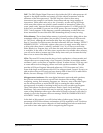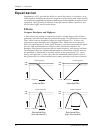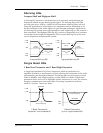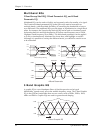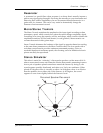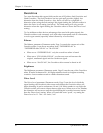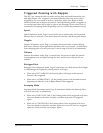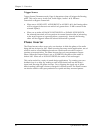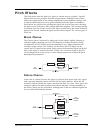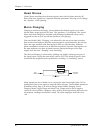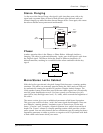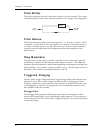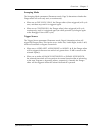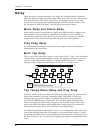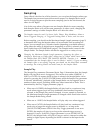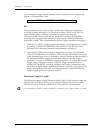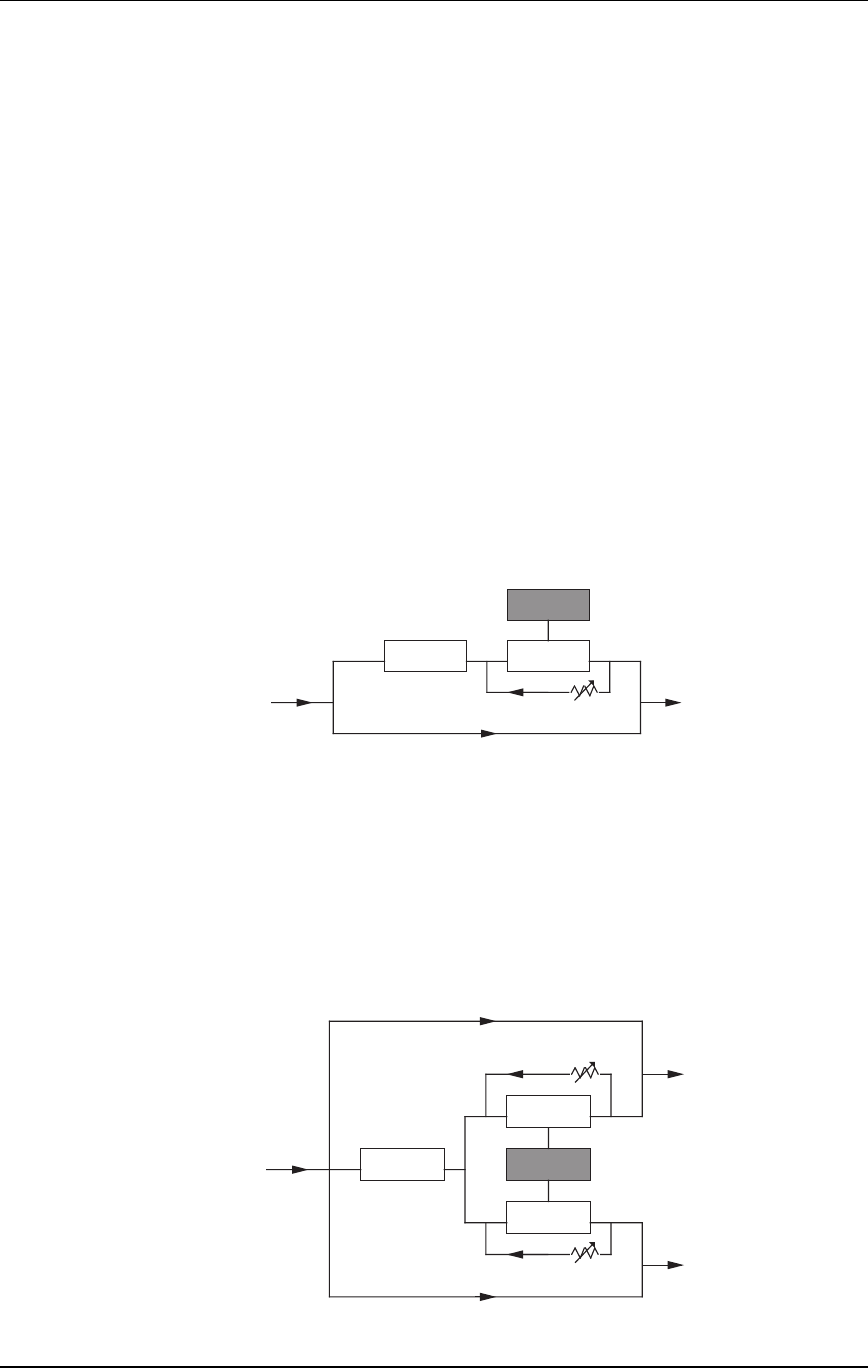
Overview - Chapter 3
Q20 Reference Manual 39
Pitch Effects
The Pitch effects alter the pitch of a signal in various ways to produce ÒlayeredÓ
timbres that are more complex than the original signal. Although some of these
effects can sound similar to one another depending on the parameter settings, each
is achieved differently and can be quite dramatic under the right circumstances.
Pitch effects are achieved by splitting the signal into at least two parts, effecting
the pitch of one of the parts, then mixing them back together. This eventual mixing
is essential since the overall sound of the effect is achieved by the actual difference
between the normal, uneffected signal and the effected signal. The various types of
Pitch are:
Mono Chorus
The Chorus effect is achieved by taking part of the signal, slightly delaying it,
and then slightly detuning it as well. The detuning is further effected by being
modulated by an LFO which causes the detuning to vary. Many parameters are
available in this scheme. The Predelay can be varied, the LFO depth can be
varied, the LFO speed can be varied, and a portion of the detuned signal can be fed
back to the input to increase the effect. Finally, the waveform shape of the LFO
can be changed from a sine wave, to a more abrupt squarewave to make the pitch
detuning more pronounced.
LFO
DETUNEDELAY
DRY
SIGNAL
CHORUSED
OUTPUT
FEEDBACK
DRY SIGNAL
Stereo Chorus
In the case of a Stereo Chorus, the signal is split into three parts with a dry signal
and a separate Detuning section for both left and right channels. When the left
channel is detuned sharp, the right is detuned flat, and vice versa. Once again, this
causes the effect to become more pronounced and dramatic. All the parameters of
the Mono Chorus are also found here, although each of the two detuned signals has
its own individual Predelay amount.
LFO
DETUNE
DELAY
DRY
SIGNAL
RIGHT
CHORUSED
OUTPUT
FEEDBACK
DETUNE
FEEDBACK
DRY SIGNAL
DRY SIGNAL
LEFT
CHORUSED
OUTPUT



